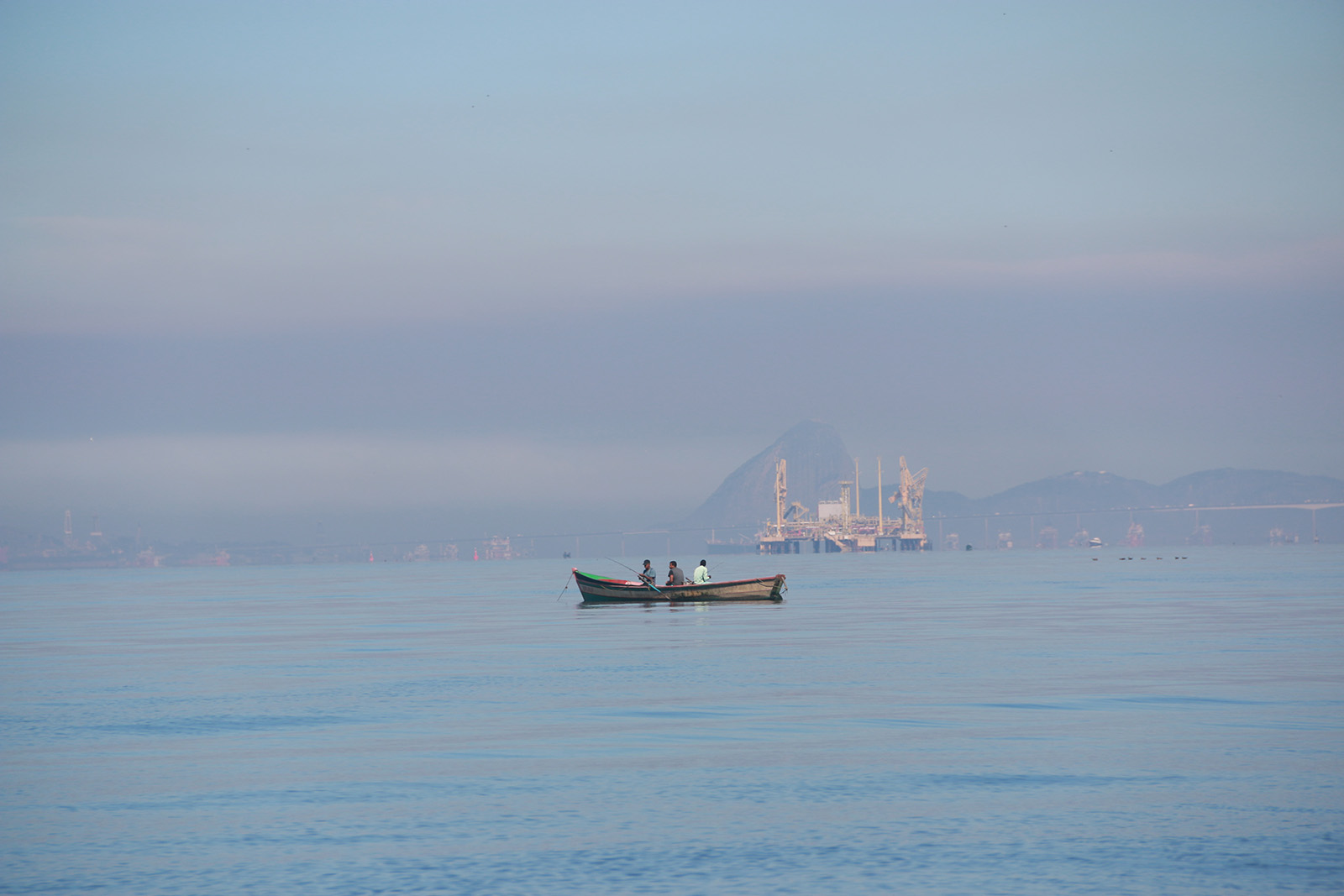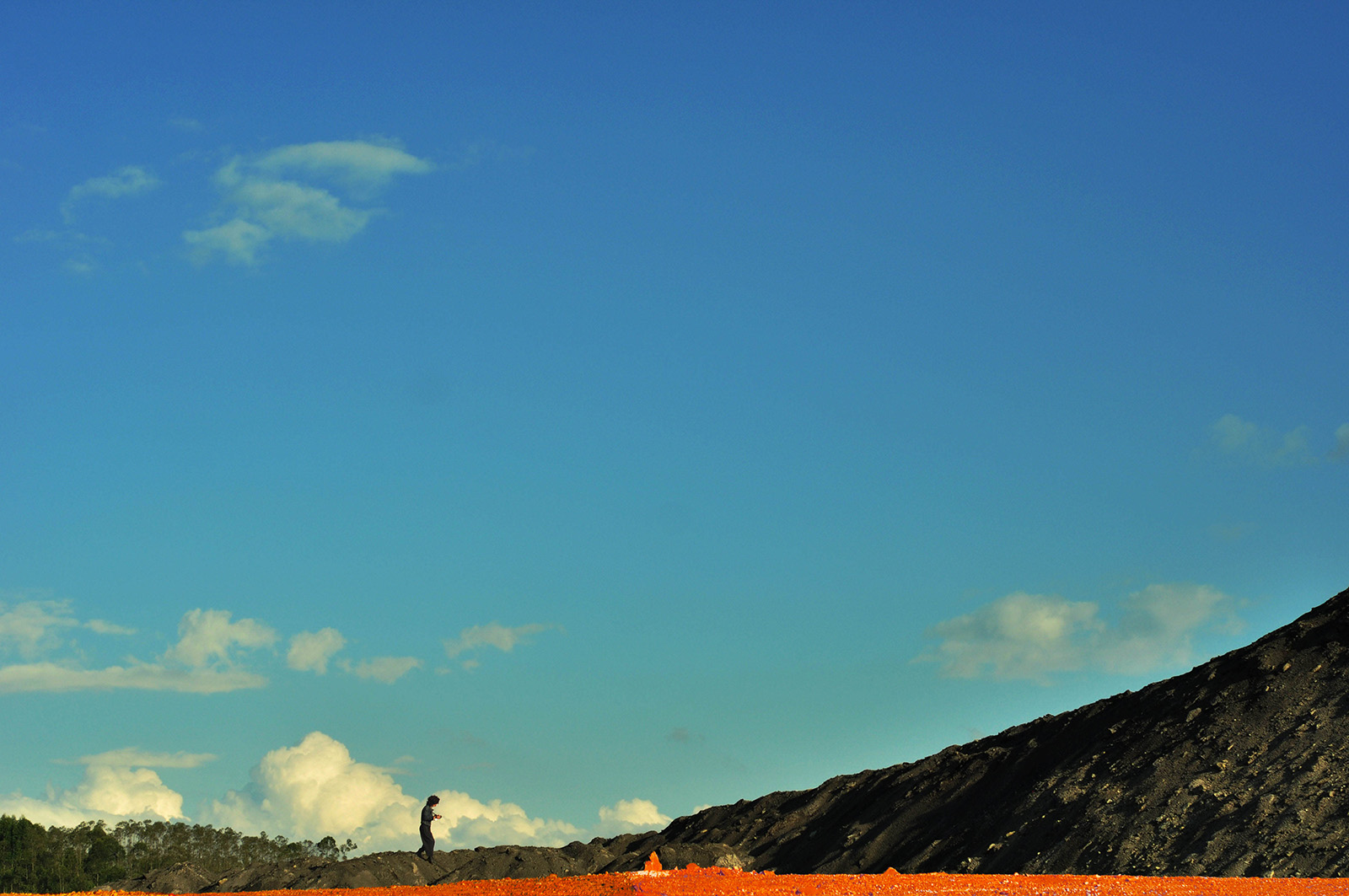

We began the Sensitive Territories | Amazonian Rivers project in the region called Baixo-Tapajós, located in Pará State. This area has been suffering an accentuated extractivist process since the beginning of the colonization process, from the old rubber cycle to the present bauxite mining, from the prohibition of native languages and catechization to present-day evangelization, from the banning of forest herbs to interventions in the beliefs, rites, and knowledges related to the forest.
What is left? We ask.
How do these original peoples live in their territories today? What knowledges and practices remain performed in their routine? How can we learn from the people of the forest and share their wisdom with a wider audience? How can we strengthen and highlight the significance of these knowledges and practices connected to the Amazon Rainforest to their peoples, those who effectively possess the knowledge but were prohibited to perform them for too long and who are still today being threatened and murdered by a system that imposes a certain way of life?
Following the methodology developed at Sensitive Territories we propose a conviviality based on immersive processes and collaborative creative actions as methods of learning, sharing, and sensibilization. In Amazonian Rivers, we were searching for individual and collective transformation and the political power needed to build plural worlds that respect diversity, or, as Edouard Glissant would say, "a World-Totality."
Aldeia Andirá
In the first mapping for this research, we traveled by boat, departing from the Santarém port along the Tapajós River, arriving at the Arapiuns River and the Andirá village, our first stop. Geographically located on the western side of Pará State, the area is home to 13 different indigenous ethnic groups, divided into 73 communities living on the banks of the Tapajós River and its affluents, such as the Arapiuns River. Here is where we find the Andirá-Arapiuns village, where Tereza Arapium, Dona Conceição, and her family live together.

Porto Santarém
From the beginning of Brazilian colonization to the current coloniality, the Baixo-Tapajós region has undergone an excessive exploratory process of its natural resources (minerals and plants) in addition to the expropriation of indigenous culture and ways of life. Recognized as one of the most significant exploitation sites during the rubber cycle – the latex extraction cycle between 1879 to 1912, later resumed between 1942 and 1945 – the region experienced a strong Jesuit presence due to its colonization by the Portuguese, leading to the prohibition of indigenous languages, beliefs, and rituals and the imposition of white European Catholic culture along with the adoption of Portuguese as the only language allowed to be written or spoken. This irreparable mark of colonialism that acts in favor of competition, individuality, and the monoculture of the soil and thought breaks with the linguistic and ritualistic diversity and ways of life of these people. Those communities were detached from their cultures and imaginaries, their relationship with the forest, and the knowledge that comes from this interaction: how to "hold the sky," as Davi Kopenawa tells us. With the end of the rubber cycle, indigenous peoples were again thrown into invisibility by the insufficient implementation of public policies addressing their basic needs, thus intensifying poverty, diseases, and deaths. Consequently, the inevitable massive abandonment of the villages prevailed.

Faced with a context of indigenous exodus, a transformation in their ways of living became unavoidable. Since then, such expropriations and explorations have been consumed as wounds of colonial violence that remain open and, nonetheless, are intrinsic processes of what we now call the Anthropocene.
In Brazil, we witness an ongoing reality of extermination of indigenous peoples dating back to European colonization and still perpetuated to this day through various means, whether by the absence of adequate government protection or by large multinational corporations involved in the extraction of wood and minerals, by the contamination of the waters, the poisoning of soils and the destruction of forests. In 2021, we experienced one of the most significant destructions of the Amazon Rainforest, reaching the highest levels ever recorded of mercury contamination in the rivers, deriving from mineral extraction. We have also been through the most devastating flood in 90 years – the so-called dry periods did not occur, resulting in the complete devastation of riparian areas. Even so, trucks, boats, tractors, and other machinery deployed by the extractive industries continue to echo their sounds and operations through the forest. While the world was slowing down due to the COVID-19 pandemic, data from INPE and INPA indicates that industries have accelerated their extractive activities.
As we sailed Amazonian rivers, we met countless rafts loaded with wood, soybeans, and ore. At Santarém-Pará port, the "monumental" presence of North American "food" production company Cargill unveils the tortuous course of a river disturbed by the penetration of socio-political conflicts down its margins. The Baixo-Tapajós region, rich in bauxite ore, is currently under constant threat of legal invasions from multinational companies as much as from illegal mining. Beyond the ore, daily deforestation is reducing the forest's coverage and producing arid zones that impact atmospheric gas absorption and rain and oxygen production, as explained by scientist Carlos Nobre, one of the major references in the study of the impact of Amazon destruction in global warming.
Despite and against the process established by the capitalist and colonial systems that generated and now aggravate the current global climate crisis, today we encounter in local actions and ways of life, more precisely in the Andirá village and their surrounding villages, examples of resistance to the colonial impositions updated to neoliberal logics. Resistance is not merely referring to survival but to perpetuating and giving new meaning to the ways of life connected to the land and the forest, respecting their cycles, taking care of its water and waste, and experimenting with a forest-world. In their experimentation, the desires and dreams of this world are counter-hegemonic seeds cultivated by human and more-than-human beings, physical and spiritual entities, woven into the same network of agencies willing to revoke the right to live well in their own territories.
Andirás
Andirás project is the first unfolding to emerge from this performative research. It is a documentary film that interweaves documentary and fictional genres, composed by a team of six women, among them Tereza Arapium, an indigenous woman. The focus of the narrative of Andirás is the female gaze upon both the past and present histories of colonization, explorations, and expropriations in the territory, all factors intimately connected to the current Anthropocene crisis. To consider which knowledges, traditions, and practices remain despite the colonial expropriations and which were disrupted, we will follow the threads of this web through the experiences of two young arapiuns. Tamires, a biology student at Universidade Federal do Oeste do Pará, assembles a herbarium of medicinal plants from her native community, in an interlocution between modern and ancestral knowledges, as a way to preserve the heritage of her people. Thainá, who is younger, is a student at the school near Andirá Village and is training to study veterinary medicine aiming to take care of the animals of the forest who remain under threat.

Through the perspective of these two young Arapiuns-Andirás, we will enter a forest-world experienced daily during walks in the woods, in communal relationships, and in the strategies of actions to bypass the suffocation of their cultures. Andirá, a Tupi-Guarani name, refers to a large bat that inhabits Brazilian forests. As a narrative proposal, the film stages the transmutation process of these young women into Andirás in a mythology fabulated from their own experiences in the village. The bat, an animal of the night, guides our narrative to oppose, visually and sonorously, the day and night ambiances, creating an atmosphere at times fantastic, where humans can associate with other beings to establish communication in defense of the forest.
Through the perspectives and possible worlds proposed by these relationships, our narrative will travel through the past and present histories of Baixo-Tapajós, considering the impacts of the Anthropocene – either locally, through human actions of extraction and destitution, or globally, from the environmental changes already in progress in the territory, derived from climate change. Addressing the conflicts in this region through the prism of two young Arapiuns reflects our uneasiness about the future, aiming to demonstrate that despite being uncertain, some luminescent alternatives are leading to reinvention pathways amidst the ruins of the present crisis.
The documentary's aesthetic proposal stems from the bodies and the sensitive territories that govern themselves based on otherness and cultivation and is concerned with the activity and construction of narratives beyond representativeness and registration. To break with the capitalist and patriarchal logic of time-keeping and limitless exploration of land we start with a performative action of listening and conviviality. Our methodology, developed over almost ten years of research, departs from research and creation collaborative actions in which we dedicate ourselves to experience a specific reality and then fabulate from it. By working aesthetic aspects through the feminine potential of seeing, listening, and feeling, we focus on an intimate and multi-sensorial relationship shared through a cinematic approach that is rooted not only in discourse but also in the gestures and actions, capable of recognizing other intelligences and adding to the layers of subjectivity rather than extracting them.
The film project Andirás emerges as an unfolding of the activities we are carrying out in collaboration with the communities living on the riverbanks of the Tapajós and the Arapiuns Rivers. It is primarily based on the need to resonate the local out to the global, focusing on the indigenous, feminine, and miscegenated alternative that protects and nourishes a soil increasingly excavated and impacted by the interests of the imperialist system.
This project considers collective creation as an ethical, aesthetic, and political means of making worlds.
Team: Ana Clara Mattoso, Ana Emerich, Patricia Gouvêa, Sofia Mussolin, Thereza Arapiuns, and Walmeri Ribeiro.

In times of emergency, to dream, and promote dreaming, is surely the most politically charged act we can do.
Read More
More than 500 years mark the arrival of colonization in Latin America. Since then, Latin American territories, recognized for their mineral wealth, have been exploited and suffocated by extractive actions.
Read More
Amid a global scenario of crises, catastrophes, and climate emergencies, art and its capacity for affection, potentializing the encounter of human and non-human bodies, becomes the central axis of this research-creation.
Read More